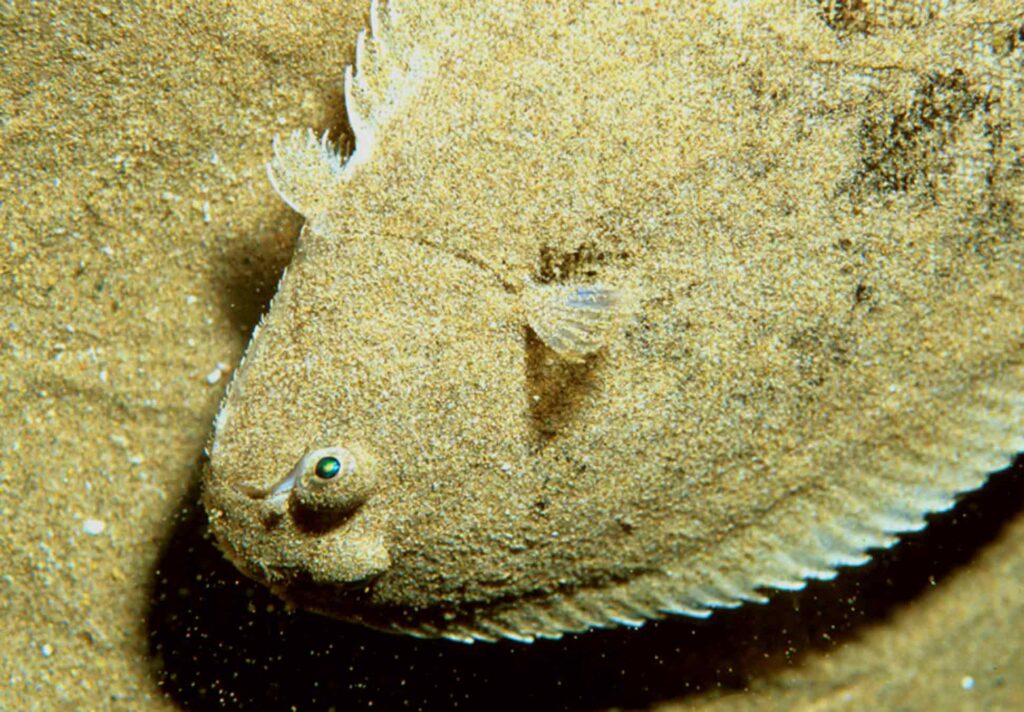
Common sole
Solea solea
MAXIMUM LENGTH

70 cm
FEEDING

Carnivore
ActiviTy

Nocturnal
The common sole is a fish that lives on sandy or muddy bottoms —from the coast to 200 m deep—, and often in estuaries. They migrate to deeper waters during the winter months, and to shallower waters during the summer. They have a very compressed body, with both eyes on the same side, on the right side of the head. During the day they are buried in the sand and only their eyes and nostrils come out. The side where their eyes are located is brown and can vary in colour so as to go unnoticed when they are still on the bottom; their blind side is white.
These fish have pigment-containing cells in their skin, called chromatophores, which allow them to change colour. As the chromatophores expand, the pigments expand and become visible. As the chromatophores contract, the pigments become concentrated in a central aggregate that is too small to be seen, so the animal loses its colouring. In this way, many fish can go unnoticed by their predators as they are mistaken for their resting place.
Interesting facts
The eggs are pelagic and when they hatch —after eight days of laying— a larva of 3 mm in length emerges. When it reaches 8 mm, the migration of the eye takes place. Their metamorphosis is complete between the seventh and eighth week, when it reaches 15 mm.
Distribution
Conservation status
